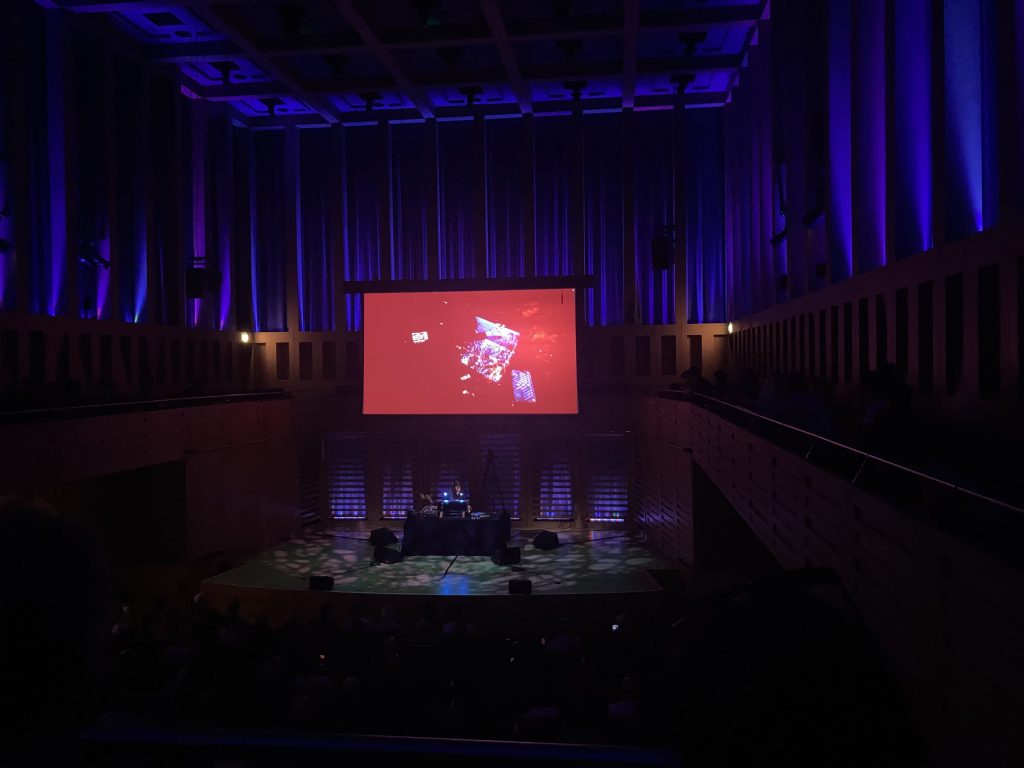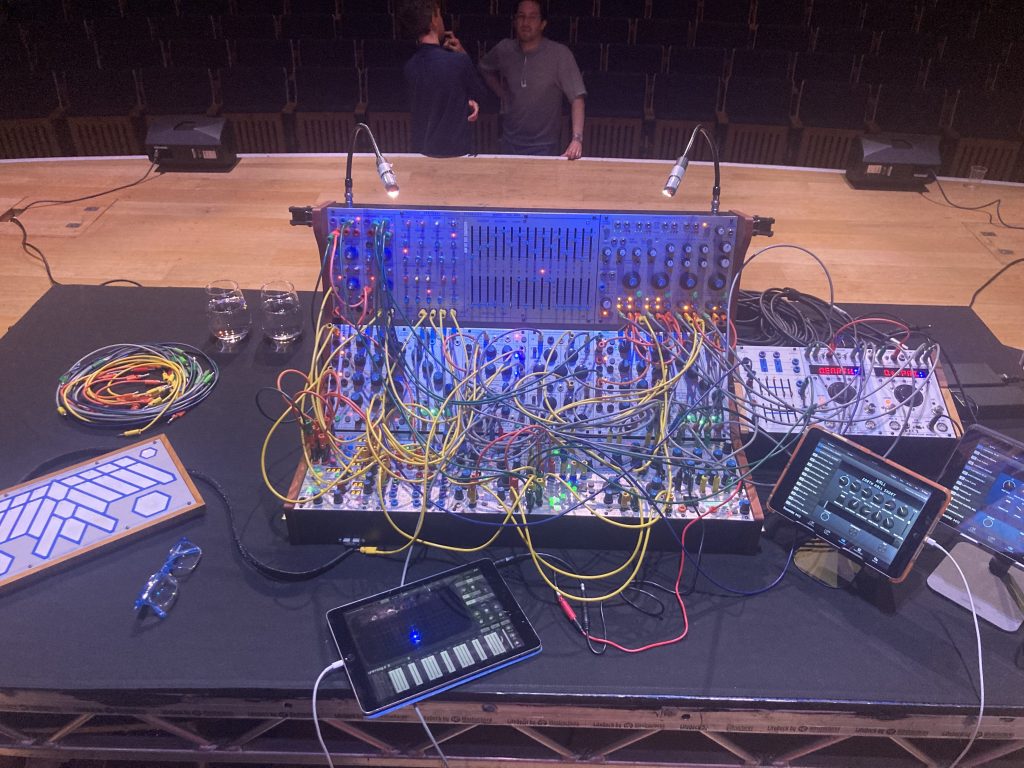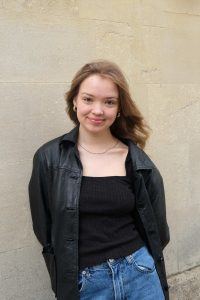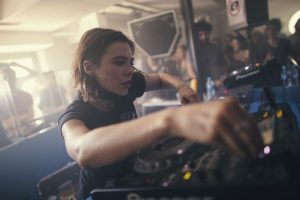
Suzanne Ciani: A Pioneer of Electronic Music
by Flora Bigham | July 11, 2023
A pioneer of electronic music, Suzanne Ciani was there in the 1960s when the genre was taking off. From creating iconic musical effects for adverts to self-producing albums and composing film scores, now, decades later, she is back where she first intended to be.
Dubbed America’s female synth hero and the diva of the diode, while at college Ciani discovered the Buchla Box, an electronic modular synthesiser designed by Don Buchla at the San Francisco Tape Music Center. SFTMC was a centre for electronic music innovation founded in 1962 by avant-garde composers Pauline Oliveros, Morton Subotnick and Ramon Sender. While there, Don Buchla collaborated with these composers to create the Buchla Box, which merged the concepts of electronic voltage control, the design of modularity, and the model of an electronic music studio. When using the box, one can control not only the pitch and rhythm, but also the timbre of the sounds themselves. The sounds are “very spatial,” Ciani tells me, “Buchla realised early on that electronic sound was meant to move.”
We meet for lunch on a stiflingly hot afternoon in London, before her concert that evening at Kings Place. “I am re-imagining an earlier life that I had in the sixties and seventies where I performed the Buchla electronic music system,” Ciani says, “there were very few audiences then, and very little understanding, and that’s why I’m considered a pioneer, because I went out into the unknown where nobody understood what was happening. But now I’m back, forty-fifty years later, and I have an audience who understands what I’m doing.”
This early life began with studying music. Ciani draws parallels between the counterpoint music she studied with the electronic music she currently creates: “My main connection with that study of music was counterpoint. That was the earliest structure of music … lines of music that move together. And I find that electronic music has a built-in counterpoint, because you’re doing the sequences, you’re dealing with lines of music.” Western music “went off the deep end into twelve tonal music,” (a system of composition created by the composer Arnold Schoenberg in the early 20th century based on the twelve tones of a keyboard) before “everything came back, because we had a revolution. Young composers said this craziness is inappropriate and they went back to simplicity on a level. But I think that for me, I’m really lucky to have a system that is based in the machine and it’s a powerful, viable, useful approach. It can do everything from tonal music … [although it] doesn’t like to tune … all the way to noise.” While ‘noise’, which is something of a phenomenon in electronic music, is important, “as you’ll see in my performance, I reference both areas.” Most importantly, “the sound is always moving, always evolving, and you can follow that. Beating percussion all of a sudden starts to elongate and the shape of the envelope changes and suddenly you’re in the ocean. It’s morphing all the time and the listener can follow that. They’re on a journey. The organic nature of it is friendly to the listener.” Such was my experience later that evening during Ciani’s almost hour-long set, percussion sounds organically evolving to a wave and back again.
Post-college, Ciani stepped out into the world with dreams of running a furniture business: “I was making huge bean bags that would hold a dozen people and my idea was that they could sit there, and we could build in a sequencer around the perimeter of the machine and everybody could tune their note. I still would love to do that … But then you came to the realities of business. I discovered that the way people design furniture is from the delivery system backwards and, as beautiful as it was, it couldn’t fit in the truck in a functional way and it took so much energy.” From then on her mentality changed. “Anything you do is going to take everything, all your energy and all your focus, and so you might as well do something in the area that’s related to what you [want to do].” She abandoned her furniture pursuits to work in commercial music, but not before a brief stint at Buchla and Associates, working in a factory making the machines. While working there, Ciani approached Ed Buchla to lead a few workshops on using the Buchla box. He initially agreed, but after the first session asked Ciani to leave as the rest of the (male-only) class decided they didn’t want a woman joining them. “I was unaware at that time,” she says, “this is something that I understood fifty years later, because Buchla was saying that it wasn’t personal and yet I was the only woman and I was being excluded. What he meant was, ‘We’re in control, the men don’t feel comfortable with you in the room because the men are afraid to look stupid in front of a woman’. If they had a question and I giggled or one of them said ‘what colour is an electron?’ and I might [she laughs] – [it’s] that sensitivity of male dominance, which is where they were comfortable … The truth is that in electronic music we didn’t need them … [it] was the most open musical expression there was because you could do it all yourself. You didn’t need the orchestra. I wanted to conduct … I was told the woman had no right on the podium. So, all of those strictures and limitations disappeared with electronics.”
Ciani began composing electronic musical effects for advertising companies, achieving major success. From creating the infamous pop and pour sound for Coca Cola, to ‘logo’ sounds for Energizer and ABC, the credits are infinite. One might expect Ciani to have resisted abandoning personal ambitions but “I got so much from doing commercial music,” she asserts, “I got to work in the best studios with the biggest budgets with the best musicians, it was a wonderful complimentary experience.” Is such a busy work schedule perhaps at odds with Ciani’s peaceful oceanic sounds (as found in many of her compositions such as her 1982 studio album Seven Waves)? “I existed in two different worlds at the time,” she responds. “The commercial work was like being in an emergency room, you know my dad was an orthopaedic surgeon. Then when I did my own music, I did it on weekends and I had a mantra, because I didn’t want to stress, I didn’t want there to be any of that energy in the music, so I said, ‘there is nothing to do, and everything will get done.’” This motto has carried Ciani throughout her career: “I still need to find that in this stage of life, because sometimes I do stress. What happened [when using this mantra] was that time stopped, so it didn’t matter what happened. You know, maybe a machine broke down, maybe the equipment didn’t arrive, maybe we had to reprogram them for ten hours. It didn’t matter. There was no stress allowed. I had the studio booked for a weekend and every single time it all got done.” Such a motto may ring true for many of us, as Ciani elaborated, “it’s funny, because as soon as you put yourself in the stress mode, worrying about getting something done, it doesn’t help. Some of that has to do with self-trust. You’re living your life and most of it is on autopilot … [but] once you have a commitment, things happen. Life wants to fulfil your commitments.”
Ciani’s debut studio album Seven Waves was the result of these productive weekend sessions. But while she wanted to be a recording artist, no record company would take her on, not knowing how to market a female musician who didn’t sing, and “in those days you had to have a record deal to release”. Earning money from the advertising world, she self-produced Seven Waves, an incredibly monumental feat. “In that time my concept changed from just the Buchla to the Buchla with other electronic instruments, because, in that period, electronic instruments began to happen. Seven Waves represents … a different approach. Now I’m back to live Buchla because that was my early commitment, using the instrument as a performable instrument.” The album is a luscious work, filled with oceanic textures which flow seemingly in and around you, alongside new age synthesiser melodies and timbres.
The ocean is a particularly rich metaphor for Ciani. She moved from New York City to San Francisco in the nineties. While the west coast city lacks the same excitement and energy, there are “beautiful natural settings” she says. “I live on the ocean, listening to the ocean, and it’s wonderful.” Ciani often uses the Buchla to create oceanic textures – a synthetic machine creating natural sounds. What is it about the ocean in particular that is so inspiring? “I think one of the biggest expressions of nature is randomness within confines,” and with the Buchla, Ciani can achieve this. “Electronically you can dial it in … the Buchla does the ocean better than any instrument. When I play the ocean, people think that it’s actually the recording of the ocean but … it’s all live. The sound is alive because it’s being created in the moment and it’s always metamorphosing, it’s not sampled. To me, a sample sound is dead [but] these sounds are alive. I think that the metaphor of the ocean is specifically a feminine metaphor, and it’s an energy system that is different from the ones we got used to. A lot of our energy systems and music have to do with drumming and walking or running, motions that are repetitive and rhythmic, whereas the ocean is a slow energy, totally dependable, not predictable, random, with this shape that builds and recedes. I adopted that energy system and compositional system, because as a composition you can also use the shape of the wave to define the architecture of the composition.” Describing herself as “primarily a composer” she uses the Buchla and “the language of control voltages” to express emotion. While composers often “look for methods and structures, I never liked those external systems … I was a romantic and how I created was based on … whether the emotion was expressed.” The Buchla provides this framework for composition for Ciani, rather than any kind of theoretical system. Ciani elaborates on the ever-increasing complexity “Western music got stuck in,” starting “to define the legitimacy of the music by its difficulty”. Electronic music, by contrast, has “no difficulty … if you want to play fast, you can play faster than any human can play”.
As well as oceanic, Ciani often describes her music as magical, whether it be musical effects she produced for adverts or works for a studio album. Is this perhaps a paradox, her music both magical but also very grounded in nature? “It needs both universes,” she says, “and that’s why as a composer you need to be responsible for the container of the music. As a painter you have a frame and a palette, but beyond that, it’s personal expression. [Similarly] there is a container for me. I have a beginning and an end and a journey that I’m on. It’s like if you’re on an aeroplane, you want to know that the pilot knows what he’s doing, and he can get you to the destination and that way you can relax. When I perform, I’m taking you on a journey. I’m the pilot and you have to feel confident.” People have questioned her, falsely denouncing performances as pre-recorded. “People want certainty. For me as the pilot, there are unexpected things that happen, and I appreciate those things because it wakes me up. We don’t have mistakes, we have opportunities, and those opportunities are precious.” Ciani relays the journey of her piece ‘Butterflies’, which she had been “trying to capture for years … after two years of not coming up with anything I just said for God sakes, let’s start with anything. So I threw my hand on the piano … and six notes came out and I said ok, that’s my motif”. This kind of mistake but in the form of an opportunity is important to Ciani. “Sometimes if you’re trying to think about the whole big thing it gets overwhelming,” she elaborates, “but if you can start with a small thing, any little anchor, and you commit to that little anchor, the rest … grows like a seed. You take that little seed, you put it in the earth and out comes this gargantuan flowering plant.” Such originality of personal expression is “the most important ingredient,” Ciani tells me. It is also why she is “not afraid of AI … I don’t think we should feel threatened by [it]”.
These natural, ethereal descriptors are often used in relation to female musicians, such as the theremin player (an electronic instrument controlled without physical touch) Clara Rockmore. Contemporary reviews described her playing “as if by magic,” leaving “the audience spellbound”. Björk similarly sees herself as a unifying force between technology and nature. Is this solely coincidence? “Women come in with open ears, a different energy completely. I mean, right now, the definition of electronic music in the Grammys, for instance, is EDM, electronic dance music, which is really from the old paradigm, that pounding, drum rhythm that goes on and on. [But] there’s another world that I think is being expressed by women.” She clarifies though: “it’s hard to make hard and fast descriptives of anything, because there’s always an exception.”
Such magic was evident during Ciani’s performance that evening. Beginning with swelling oceanic sounds, deep bass grew into the texture which then evolved into panning synth pads. Ciani’s commitment to playing Buchla in quadraphonic (using four separate audio channels with four speakers in each corner of the room) paid off. Sounds flowed through the room, moving along rows of the audience, in and around the listener. Contrapuntal layers interwove with melodic rhythms and trancing patterns, filtering and sweeping around, spread across the separate audio channels. Sounds uncannily similar to a human voice, water droplets, and a helicopter followed, as timbres organically shifted. As described by Ciani earlier, percussion elongated and grew into the ocean. These layers gradually died down as the soft waves returned, fading into silence before rapturous applause.

The decision to return to performing live with the Buchla was not a calculated one, Ciani tells me. “It happened by accident actually, because I was invited by Moogfest, I think it was in 2016 or so and I did a concert in San Francisco. It was my first live Buchla concert in like forty years. I discovered a whole new audience. It was a new feeling for me to play to people who knew what I was doing. So, it just happened, the momentum built, and I’ve been touring since that time. I’ve been performing live … that’s really the best way to experience this music because it’s very spatial.” Interacting with the audience in this way has been an incredible discovery she’s found: “I feel very lucky that I lived long enough to experience the flowering, the manifestation of something that I had always dreamed about.” While some elements, such as sequences and “raw materials,” are set up pre-show, the rest is pure improvisation. “It’s in the moment,” Ciani says, “and I think that the joy of playing these instruments is that you can interact with them in the moment and they give back to you and you get involved.”
At the end of the performance, Ciani shushes the crowd (the applause does not dwindle) before announcing the Buchla will remain on stage and those who wish may come up to have a look. A large queue rapidly forms, evidence this new audience are as eager to learn about electronic music as they are to listen to it. I hurry down from the upper balcony to the queue (the only seating choice as the stalls quickly sold out), which grows ever bigger as Ciani returns to the stage, greeting each person who comes up, chatting, taking photos, and taking time to interact with every member of the crowd. As I reach her, I ask if she has any parting words of advice. “Don’t rush” she says. Only when you are ready should you commit, and it is this “commitment [which] actually does the work”.
The queue is looming behind and I must move on, leaving the pioneer and her Buchla behind.

Words and photography by Flora Bigham




